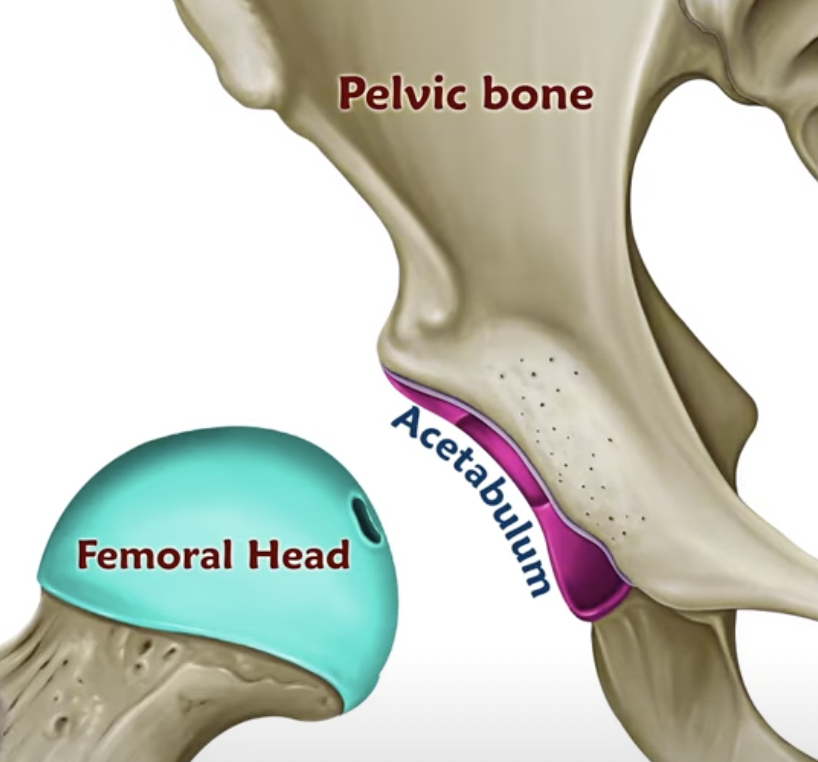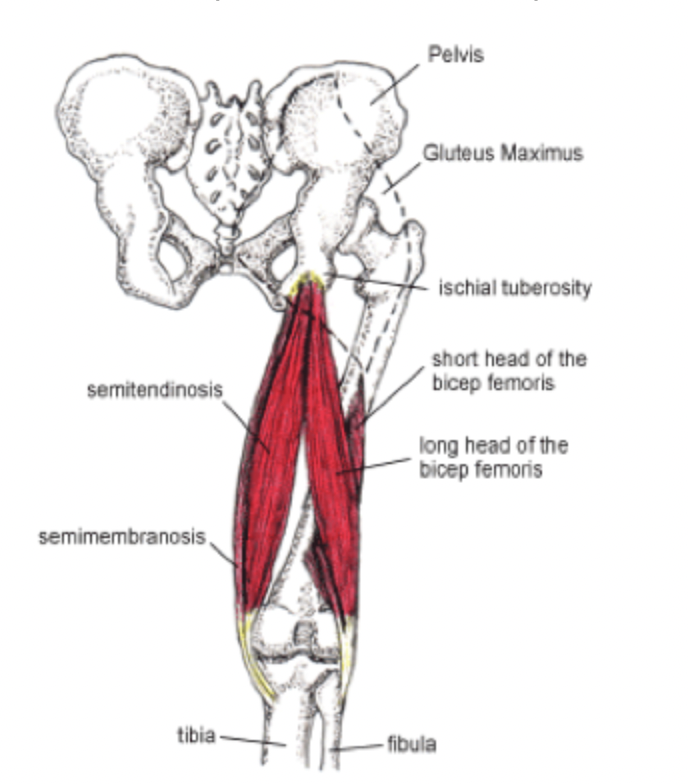Hip Anatomy and Injuries
- golabiromtin
- Jul 21, 2024
- 4 min read
Updated: Jun 23
By Romtin G.
Before reading this article, check out our Instagram page where we'll have infographics on each article topic. They're perfect if you want a short introduction before reading the article, or if you want to get a general idea of the topic without reading the entire post.
ANATOMY
The hip joint is called a ball and socket joint, a joint where one bone hooks to the hollow space of another bone. As a freely mobile joint (a synovial joint), it can move through three planes: the sagittal plane (forward-backward), the frontal plane (left-right), and the transverse plane (outwards and inwards rotation). The ball of the hip joint consists of the head of the femur (thigh bone), which fits into an inward socket, a part of the pelvis called the acetabulum.

The function of the hip joint is to provide support in static and dynamic movement, balance, stability, and connection between the lower limbs and the torso. The hip joint has a tough capsule that helps with stability and is also lax enough to accommodate a wide range of movement. It incorporates three ligaments (one of them being the strongest in the human body) that prevent two things from happening: hyperextension and excessive rotation by ensuring the femoral head stays in the acetabulum and the movement of the leg towards and away from the body. The hip joint gets blood supply from several arteries that help keep it healthy and functional, including the medial and lateral circumflex femoral arteries, which supply blood to the top of the thigh bone and the surrounding area. There are also a few smaller arteries called the acetabular branch and the obturator artery, which provide blood to the socket part of the hip joint. These arteries deliver the necessary oxygen and nutrients to the hip joint, supporting its overall health and ability to heal from injuries.

INJURIES
First, we’ll start with hip dislocations. Hip dislocations occur when the femoral head displaces from the acetabulum. 90% of hip dislocations are posterior dislocations, which means the femoral head is displaced backward and out of the socket, putting pressure on surrounding nerves such as the sciatic nerve (which can cause sciatica) and blood vessels. These can occur when a direct force is applied to the knee while the hip is flexed, like in a car accident when the knees hit the dashboard or during high-impact sports. Anterior hip dislocations account for 10% of all hip dislocations, and the femoral head is pushed forward and out of the socket. Unlike knee dislocations (read my article) that often go back into place by themselves, manual joint alignment is required, usually under anesthesia. Treatment typically involves physical therapy to restore strength and mobility, and full rehabilitation takes several weeks to several months.
A hip labral tear involves the tear of the labrum, a supportive ring of fibrocartilage that surrounds the acetabulum. Tears can occur due to sudden and repetitive stress and trauma, so these injuries are common in sports like ballet, golf, football, hockey, skiing, and swimming. Some symptoms include pain in the hip or groin followed by a locking or clicking sensation and reduced range of motion due to swelling. Non-surgical treatment involves physical therapy and anti-inflammatory medication, but there is a type of surgery that has gained popularity over the past few years – arthroscopic surgery. Arthroscopic surgery, involving the insertion of a small tube connected to a camera through a small incision, is used to guide the preparation or removal of parts of the torn labrum. Post-surgical recovery typically takes 3 to 6 months, while non-surgical recovery can vary based on the severity of the tear, response to treatment, and the patient's diligence in following activity modification.

Hip Bursitis involves the inflammation of the bursae, small fluid-filled sacs that reduce friction between bones and soft tissues. One bursa covers the greater trochanter, the pointed tip of your hip, and the other is on the inside groin area of your hip. This injury is common in the elderly and women, but it is also common in athletes who participate in contact sports like football, hockey, and basketball. Patients often experience pain on the outside of the hip, which may radiate down the thigh, and the pain worsens with activities like walking, climbing stairs, or lying on the affected side. Surgery is rarely required to treat this condition and is only considered if other treatments – such as physical therapy, activity modifications, and steroid injections – prove ineffective. When necessary, the surgery involves removing the bursa, which the hip can function well without.

The last injury I’ll discuss is a hip pointer – a bruise or other injury to the upper or outside part of the hip bone, often in a part of the upper pelvis called the iliac crest. Hip pointers are common in athletes who participate in sports where you come into contact with a hard surface, such as volleyball, gymnastics, and dance. The location of a hip pointer makes this type of bruise so discernable, as it can be grueling to do simple things like laughing and walking around. Other symptoms include a reduced range of motion in the hip, bruising and swelling in the pelvic region with discoloration, and overall pain and tenderness. X-rays ensure no bone fracture, and other assessments ensure no organ or soft tissue damage. Sometimes, a hip pointer can cause an avulsion fracture, where the attached muscle in the area pulls away a piece of bone. Treatment includes rest, ice, compression, and elevation (abbreviated by the acronym RICE), anti-inflammatory medication like ibuprofen, and physical therapy. Even in the case of an avulsion fracture, recovery time is usually from 1-3 weeks, and the individual can return to activity to the same extent as before.
CONCLUSION
In summary, the hip joint's unique ball-and-socket structure allows for a broad range of motion and plays a critical role in supporting movement and stability. It is reinforced by a tough capsule and three strong ligaments that help prevent hyperextension and excessive rotation, both of which can lead to many kinds of injury. Multiple injuries can impact the hip joint, including dislocations, labral tears, bursitis, and hip pointers, and each condition presents its own set of challenges and requires specific treatment approaches, ranging from physical therapy to surgical interventions. Understanding these injuries and their treatments can aid in effective management and recovery, ensuring the hip joint remains functional and healthy. Thanks!
Sources:


